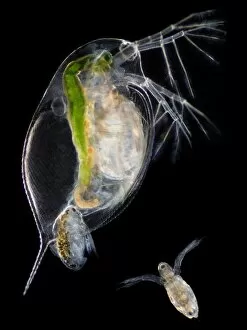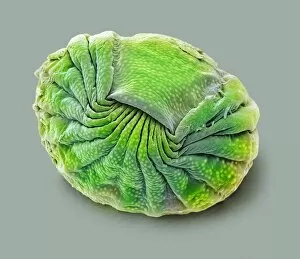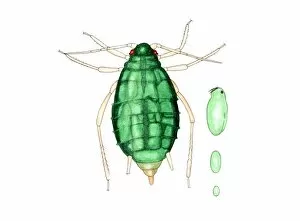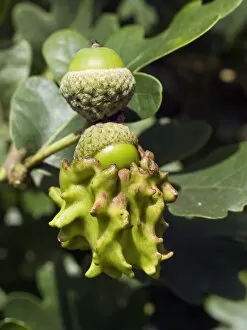Parthenogenesis Collection
Parthenogenesis, a fascinating reproductive phenomenon observed in various organisms, continues to captivate scientists and researchers worldwide
All Professionally Made to Order for Quick Shipping
Parthenogenesis, a fascinating reproductive phenomenon observed in various organisms, continues to captivate scientists and researchers worldwide. One such example is the Bdelloid rotifer, as seen through scanning electron microscopy (SEM). These microscopic creatures have evolved the ability to reproduce without fertilization, making them unique among animals. The SEM images of Bdelloid rotifers reveal their intricate structures and adaptations for survival. Their tiny bodies are adorned with cilia that aid in locomotion and feeding. Despite their minuscule size, these remarkable creatures possess an extraordinary resilience to desiccation and can withstand extreme conditions by entering a state called cryptobiosis until favorable circumstances return. Another organism that exhibits the bean aphid. This small insect reproduces asexually throughout its life cycle, allowing for rapid population growth under suitable environmental conditions. The process enables these aphids to colonize plants efficiently and exploit available resources. In contrast to the Bdelloid rotifer and bean aphid's reproduction methods, water fleas employ both sexual and asexual reproduction strategies depending on environmental factors. Under optimal conditions, water fleas reproduce sexually; however, when faced with unfavorable circumstances or limited mates availability, they resort to parthenogenesis as a means of ensuring successful reproduction. Witnessing water fleas giving birth is truly mesmerizing. Through light micrographs capturing this incredible moment in time, we can observe how new individuals emerge from their mothers' brood pouches fully formed – miniature replicas ready to embark on their own journeys. Oak spangle galls also provide us with insights into parthenogenic processes within plant systems. These peculiar growths result from interactions between oak trees and gall wasps that induce abnormal tissue development through parthenogenetic egg-laying activities. Such interactions showcase nature's intricate mechanisms at work. The study sheds light on evolutionary biology while challenging traditional notions surrounding reproduction strategies.









